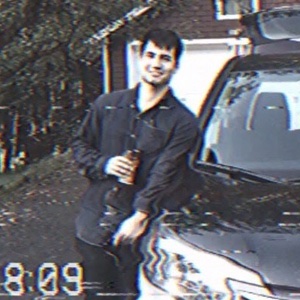30+ Best Frankenstein Movies
A list of the best Frankenstein movies ever made.

Table of Contents
The first Frankenstein movie was released in 1910. Since then, hundreds of Frankenstein movies and TV shows have been made globally.
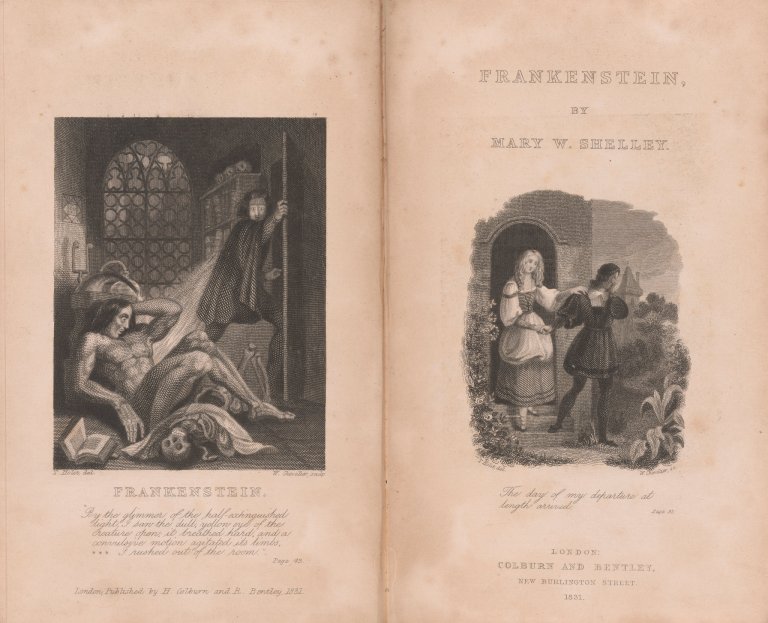
The original novel, Frankenstein; The Modern Prometheus, was published in 1818 anonymously. The writer was a teenaged girl named Mary Shelley. She had dreamt up the idea for the novel after having a fever dream in Lake Geneva during the coldest winter to date in Switzerland. It wouldn’t be until 1831 when Frankenstein would be published under her real name.
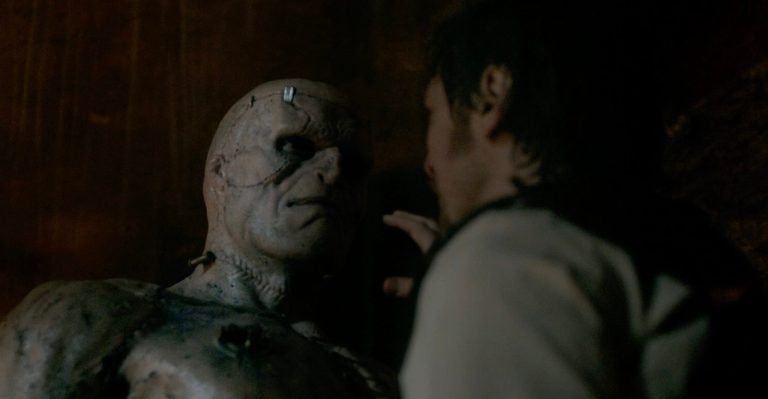
It’s incredible that the mythos of Frankenstein, which is an archetype of technology/science gone wrong and is so relevant to the 21st century, was written by someone born in the 1700s. In an era of artificial intelligence, genetic engineering, robotics, and environmental dominion, it could be said that the concept of Frankenstein is more relevant than it was at the dawn of Enlightenment thinking in which Shelley wrote it.
At the heart of Frankenstein legend is a timeless question about human hubris. As we invent, as science makes humans act more and more like gods, are we happy with the result? Or do we toil toward technological progress, only to recoil in fear once we see what we have unleashed?
That question might be impossible to answer. Yet the representations of Frankenstein in film from 1910 until the present day provide an interesting window into our concerns about science and technology, and incidentally religion as well. They are so much more than monster movies. Here are dozens of the movies about Frankenstein explained and contextualized.
Old Frankenstein Films
Frankenstein (1910)
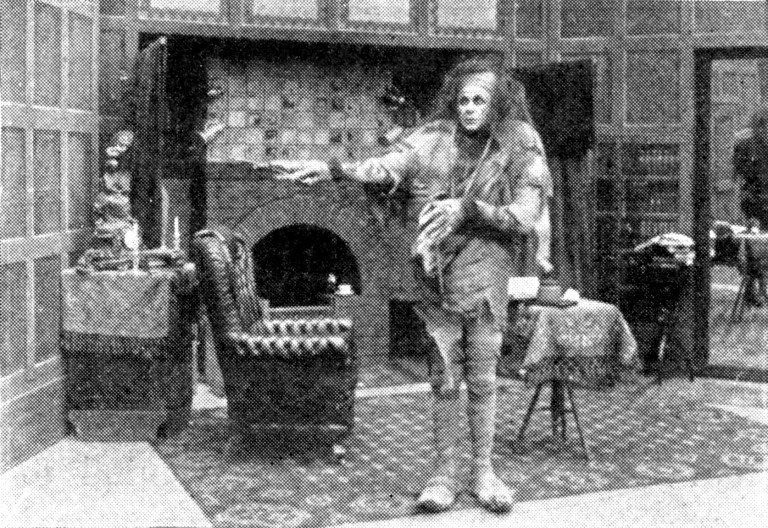
This 16-minute film marks the first cinematic rendering of Mary Shelley’s classic novel. Long thought to have completely disappeared, an original nitrate print was finally located in Wisconsin sometime in the mid-70s. It casts the monster as insanely jealous, and at the end of the film, we’re not really sure if the monster exists at all or is merely a reflection of Dr. Frankenstein’s evil inclination to mess with the forces of nature. The center of the film involves the monster’s “creation” and is impressive considering how new the very genre of film was. 2020 Movie Reviews explains how this early special effect was achieved: “It isn’t made up from the dismembered limbs of corpses as it would be in all later Frankenstein movies, but created in a giant vat from some mysterious potion. The effect was actually achieved by burning an effigy of a man and then running the film backwards in order to give the impression of a man being created.”
Frankenstein (1931)
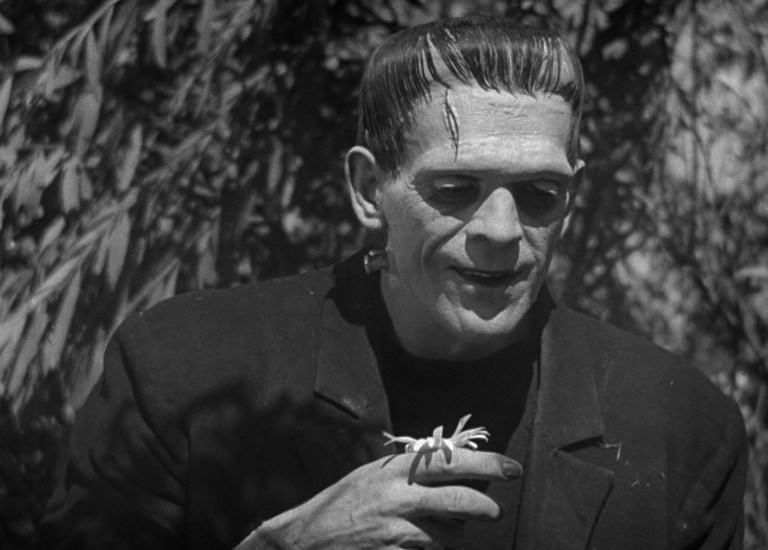
Director James Whale’s classic 1931 film will always stand as the Frankenstein movie by which all others are judged. Colin Clive stars as Dr. Henry Frankenstein, a man absolutely obsessed with creating life out of discarded human body parts. Boris Karloff cemented his place in film history with his wordless portrayal of a gruesome creature who only yearns to be understood. Along with the creation scene itself, a memorably disturbing segment involves the monster befriending a little girl at lakeside. Together they start throwing flowers into the lake. When the monster also throws the little girl into the lake, it’s not out of malice—he naively assumed that everything that’s thrown into a lake will also float. Reel Views wrote, “While aspects of the production may seem dated to today’s audiences, there’s an aura of creepiness that no big-budget motion picture has ever been able to duplicate.”
The Bride of Frankenstein (1935)
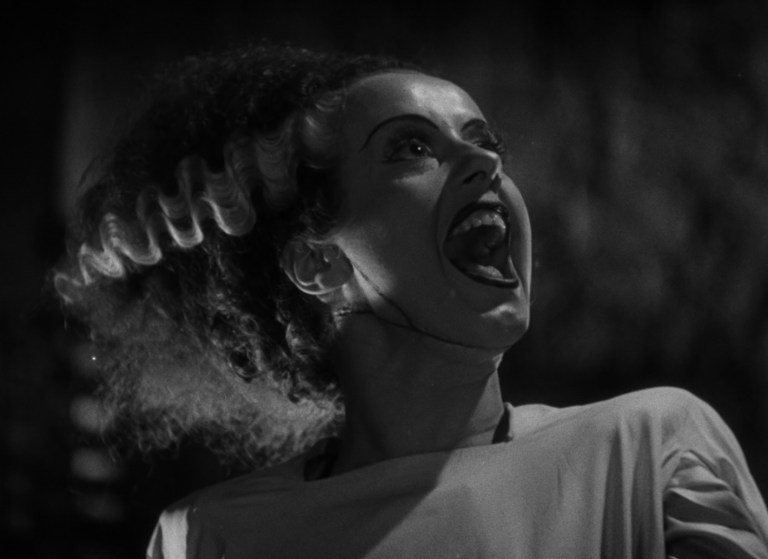
Director James Whale returns. So does Karloff in his role of the monster. The twist here is provided by actress Elsa Lanchester in dual roles as Mary Shelley and also as the titular character with her towering mounds of curly hair that is punctuated by streaks of grey on either side that looks light lightning bolts. And in a nod to the earlier film, this time the monster saves a girl from drowning, but lynch-happy villagers misinterpret it as an attack. Roger Ebert called it “the best of the Frankenstein movies—a sly, subversive work that smuggled shocking material past the censors by disguising it in the trappings of horror.”
Son of Frankenstein (1939)
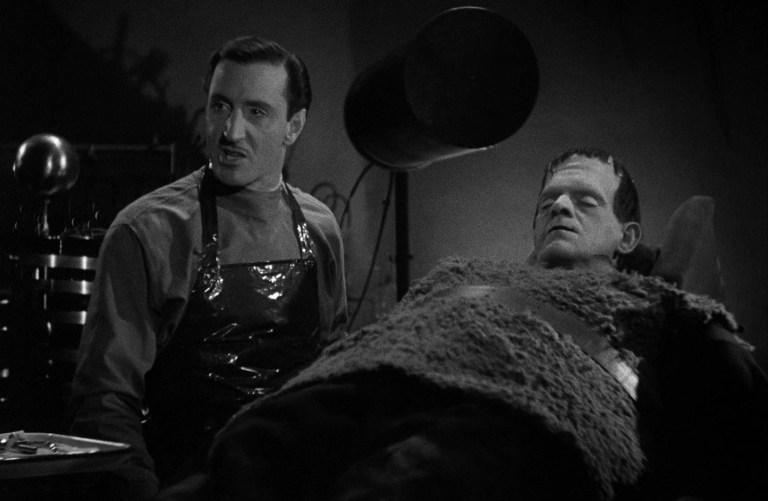
Seeking to capitalize on the roaring success of a late-1930s double bill featuring Frankenstein and Dracula, Universal Studios brought back their most successful franchise with this tale of Dr. Frankenstein’s son, who returns to the family castle, finds the monster’s corpse, and revives him yet again. Karloff also returns, and Bela Lugosi also stars—this time as Ygor, Dr. Frankenstein’s hunchbacked assistant. Praising the film’s “expressionistic sets,” a reviewer for IMDb wrote, “The universe of ‘Son’ is a world of perpetual night and fog; rain swept castles and blasted heaths; terrifying flashes of lightning; shadowy corridors where giants lurk; hidden passageways leading to underground crypts, where time, dust and the worm aren’t the only things that move among the dead.
The Curse of Frankenstein (1957)
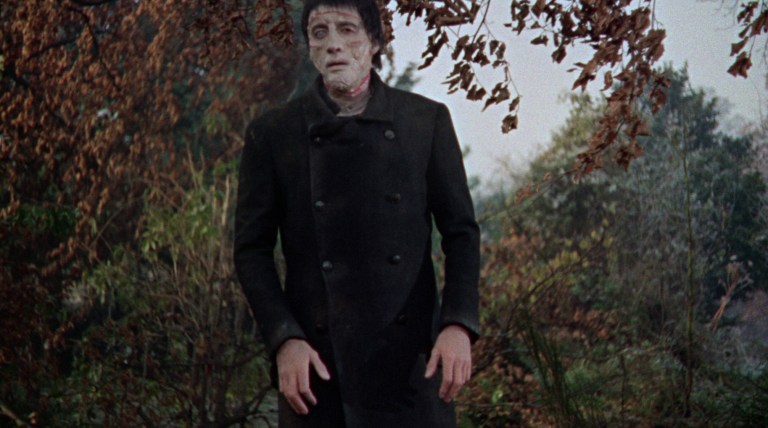
This is the first of a whopping seven films by Hammer Horror featuring the legend of Frankenstein but instead focusing on Baron Victor Frankenstein himself rather than the monster. It also marks the first pairing of Hammer standbys Peter Cushing (as Doctor Frankenstein) and Christopher Lee (as the monster). Dr. Frankenstein is on trial for murder and shares the tale of a creature that he raised from the dead, only for the experiment to go horribly wrong. Exquisite Terror said, “Peter Cushing as Frankenstein brings a subtlety that takes us through the nuances of the character’s gradual move from a relatively innocent scientific curiosity to obsessive thirst for power and frightening disregard for the safety of others
Frankenstein 1970 (1958)
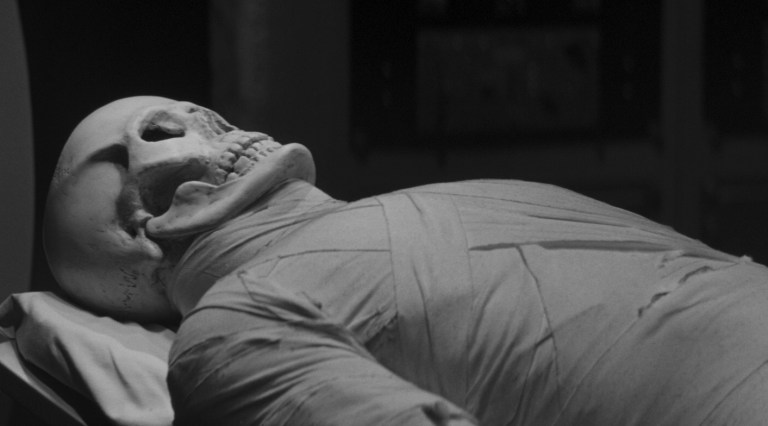
Down and out on his luck, the last surviving member of the Frankenstein family leases out the family castle to a film company in exchange for the funds he needs to keep his ancestors’ hopes of reanimating dead tissue alive. The film was originally titled Frankenstein 1960 until filmmakers determined the title wasn’t “futuristic enough.” This marked Boris Karloff’s fifth Frankenstein movie and the only one in which he plays a member of the Frankenstein family. The Terror Trap wrote, “Unfortunately, Boris alone can’t keep this one afloat. The opening scene is really well done; but after that, the chills are few and far between, and Boris is hamstrung by an especially bland supporting cast.”
The Revenge of Frankenstein (1958)
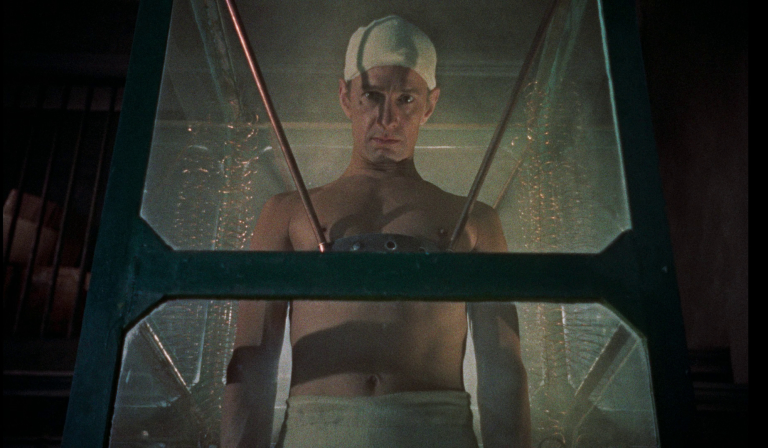
Revenge of Frankenstein picks up where the previous year’s Curse of Frankenstein left off—Doctor Frankenstein has gone into hiding after escaping the guillotine. He starts a private medical practice under a pseudonym, but his old inclinations get the better of him and he begins to assemble body parts to take another crack at building the perfect creature, this time using his assistant’s brain. Daily Dead wrote, “Cushing’s Frankenstein is…more a man blinded by science than an outright psycho.…This is a man who would hug his own mother and tell her he loves her whilst knifing her in the back to take out a kidney if he thought it would better science.”
The Evil of Frankenstein (1964)

This is widely regarded as the worst of Hammer Horror’s Frankenstein series. Dr. Frankenstein returns to his old village to continue his experiments with creating life from dead tissue. After he revives the original monster, a rival hypnotist competes to seize control of the monster for his own nefarious ends. Son of Celluloid wrote, “Any film featuring Peter Cushing has some redeeming qualities, but even the ever-dependable Cushing struggles with the liberties taken with the Frankenstein character. He comes across as a petty crybaby, his quest this time merely a childish vendetta against those that destroyed his work and drove him into exile.”
Frankenstein Created Woman (1967)
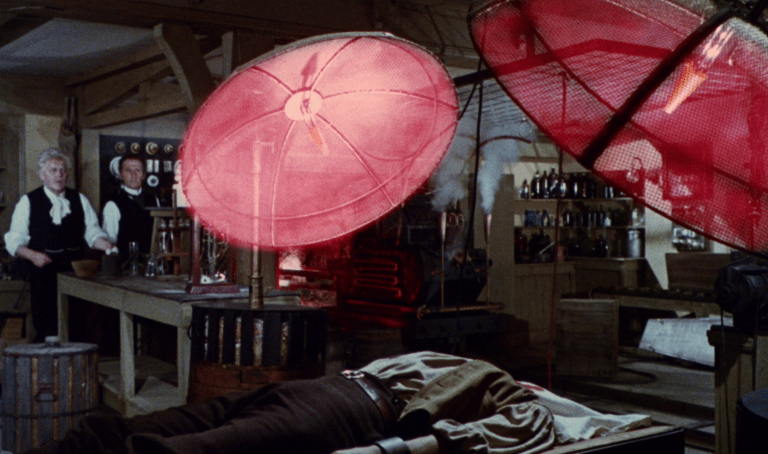
In this Hammer production, the twist is that Baron Frankenstein (Peter Cushing) has also died—but he is reanimated and seeks to transfer the soul of a young man into the body of his gorgeous young blonde lover (Susan Denberg), who turns bad and starts killing every man who has ever wronged her. British Horror Films complained, “For a film with such an exploitative title, Frankenstein Created Woman is a dull affair. You don’t even get to see anything remotely approaching the pre-publicity photos (Cushing carrying a bikini-clad babe around his laboratory). It’s also quite lackluster in the blood-and-guts department – because the Baron is only concerned with transplanting the ‘life force’ from one body to another, there isn’t even any skull sawing or limb stitching going on.”
The Horror of Frankenstein (1970)
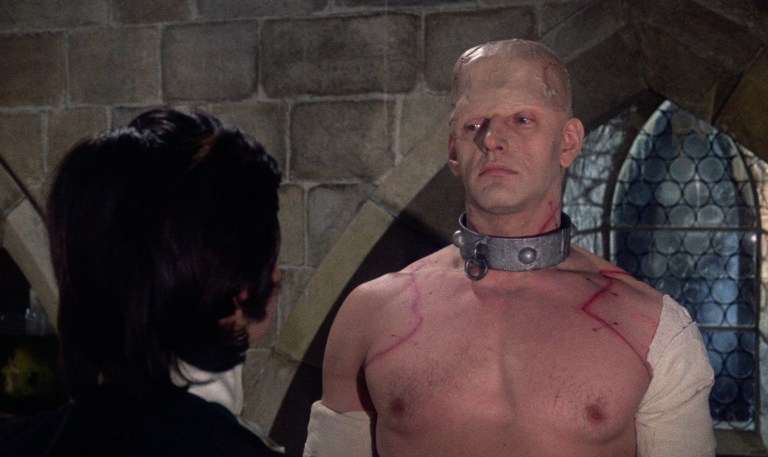
This Hammer production is notable for its self-reflexive nature—it’s basically a remake of 1957’s Curse of Frankenstein, but with a thick shellacking of sex and humor layered atop it all to reflect the changing times. Kate O’Mara steals the show as a voluptuous and seductive maid. Classic Horror wrote, “The real reason to see this movie is that its sense of humor is deliciously dark. You root for Frankenstein, not because he’s a particularly nice person. On the contrary, you root for him because he’s a total bastard, and you want to see what bit of nutty debauchery he’ll engage in next.”
Lady Frankenstein (1971)

Released in Italy as La figlia di Frankenstein (Frankenstein’s Daughter), the film’s plot starts with the death of Baron Frankenstein, who has been killed by his own monster. His daughter, who has recently graduated from medical school, seeks to follow in her father’s footsteps. But the twist is that she transplants her father’s assistant’s brain into the body of a handsome young man, and the old Frankenstein monster seeks to kill everyone involved in the creation of this more attractive and newer monster. Classic Horror wrote, “As much a tale about obsession, the insane things you’ll do for love, the risks you’ll take for money, the game we play with authorities and a complex morality play as a traditional Frankenstein picture, this movie deserves to be recognized.”
The Erotic Rites of Frankenstein (1972)

Released in Spain as La maldición de Frankenstein (The Curse of Frankenstein), this is a softcore pornographic horror movie directed by Jess Franco. Right at the moment Dr. Frankenstein and his assistant are bringing their creature to life, they are killed. A malevolent man named Cagliostro steals the monster—who is extremely muscular and appears shirtless throughout the film—and seeks to have it mate in order to create a master race. Bloody Disgusting wrote, “The Erotic Rites of Frankenstein is a twist on the Mary Shelley classic that only Jess Franco could provide….Frankenstein’s murderer is Melisa, a very strange creation who appears to be a little bit woman, a little bit bird and a dash of vampire….Once the perfect woman is complete, Cagliostro will force her to mate with Frankenstein’s Monster to create a super race. Yeah, this is definitely a Jess Franco film.”
Blackenstein (1973)
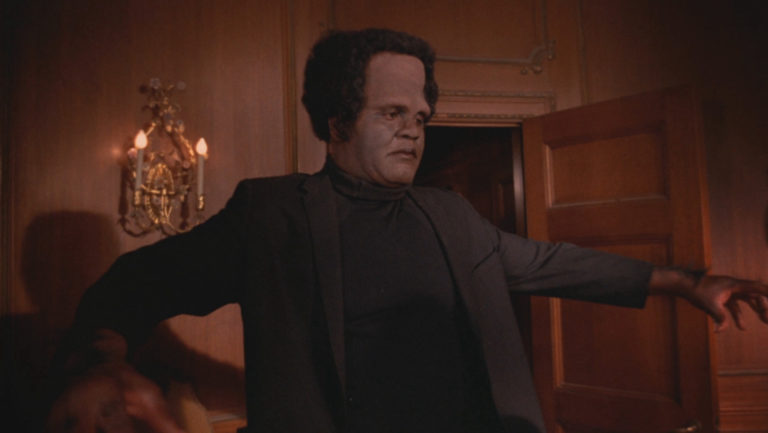
This mixture of blaxploitation and horror, also released under the title Black Frankenstein, was an attempt to cash in on the success of the previous year’s Blacula, but it proved to be both a commercial and critical failure. It is very loosely based on Mary Shelley’s 1818 novel but with obvious updates related to the Vietnam War and the Black Power movement. Eddie (Joe De Sue) is a muscular black Vietnam War veteran who had both of his arms and legs were blown off in battle. His loving wife, Doctor Winifred Walker (Ivory Stone), is working in tandem with a white physician who enrolls Eddie in experimental surgery to replace his limbs. Their plot is foiled, however, by a jealous assistant who has designs on Winifred and who spikes Eddie’s treatment with contaminated DNA, causing him to become a brutish killer with a giant square Afro at night. Certain scenes from Blackenstein were said to be filmed on the same sets that were used in the classic 1931 Boris Karloff original.
Frankenstein: The True Story (1973)

A three-hour, two-part TV movie in which Dr. Frankenstein (Leonard Whiting) creates the artificial man he’d always hoped to create but rejects it—causing the uncharacteristically handsome monster (Michael Sarrazin) to escape and vow revenge against his creator. Girls, Guns, and Ghouls wrote, “Don’t let the made-for-TV nature of the work put you off, this one’s big budget and handsomely mounted…. I can’t imagine made for television movies ever being this good again. There aren’t many Frankenstein versions that are better, and it would make a great addition to any cult movie collection.”
Flesh for Frankenstein (1973)
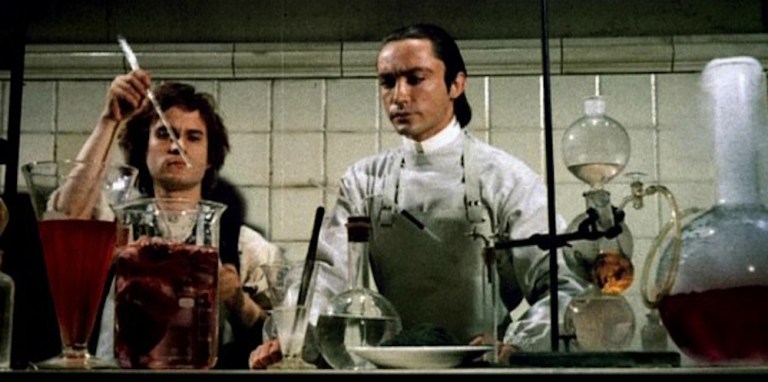
Released and marketed in America as Andy Warhol’s Frankenstein—where it was rated “X” due to graphic violence and sex—the only direct connection Warhol had to this film was that it was directed by Warhol regular Paul Morrisey and stars regular Warhol actors such as Joe Dalessandro and Udo Kier. The plot involves Baron Frankenstein (Kier) creating two zombies—one male and one female—and attempting to mate them and produce a Serbian master race. Groovy Doom writes, “Whenever I think of the most disturbing films I’ve ever seen, ‘Flesh For Frankenstein’ (1973) has got to be near the top of the list….While on one hand ‘Flesh for Frankenstein’ is completely absurd and even laughable (and the filmmakers do want you to laugh), its nightmarish world of bodily degradation and sexual excess starts to take on a life of its own.”
Frankenstein and The Monster From Hell (1974)

In this offering from Hammer Horror—which was presented in America as part of a double bill with Captain Kronos: Vampire Hunter—Peter Cushing returns as Dr. Frankenstein, who this time around runs an asylum and collaborates with a mental patient to reanimate the dead. The New York Times wrote, “anyone who has a grain of sense as well as a fondness for horror films, especially the expensive-looking, mostly deadpan Hammer kind, can’t afford to miss them…. Compared with ‘Andy Warhol’s Frankenstein,’ however, it is very straight and solemn, chock full of the old horror film values we don’t see much of any more.
Young Frankenstein (1974)
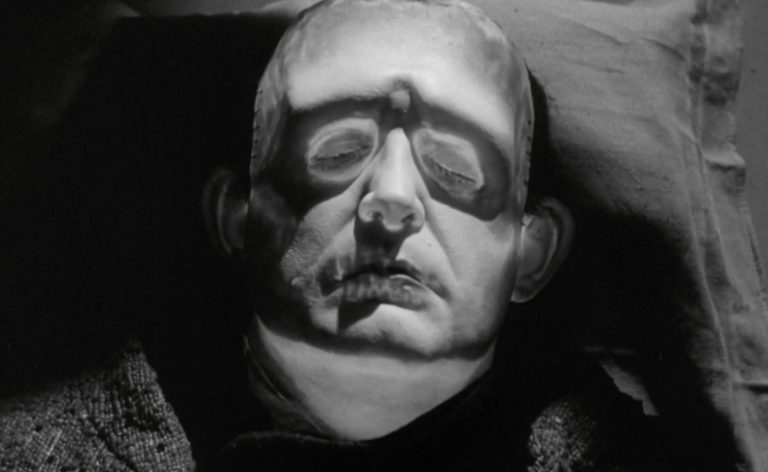
Gene Wilder stars as the American grandson of Dr. Frankenstein—which, he insists throughout the film, is pronounced “FRONK-und-shteen”—in this wildly successful black-and-white parody by Mel Brooks, who actually located the original machinery used to reanimate the Frankenstein monster in the 1930s Universal Studios classics for this film. Roger Ebert writes, “Mel Brooks is home with ‘Young Frankenstein,’ his most disciplined and visually inventive film (it also happens to be very funny)….From its opening title (which manages to satirize “Frankenstein” and “Citizen Kane” at the same time) to its closing, uh, refrain, “Young Frankenstein” is not only a Mel Brooks movie but also a loving commentary on our love-hate affairs with monsters.
The Rocky Horror Picture Show (1975)
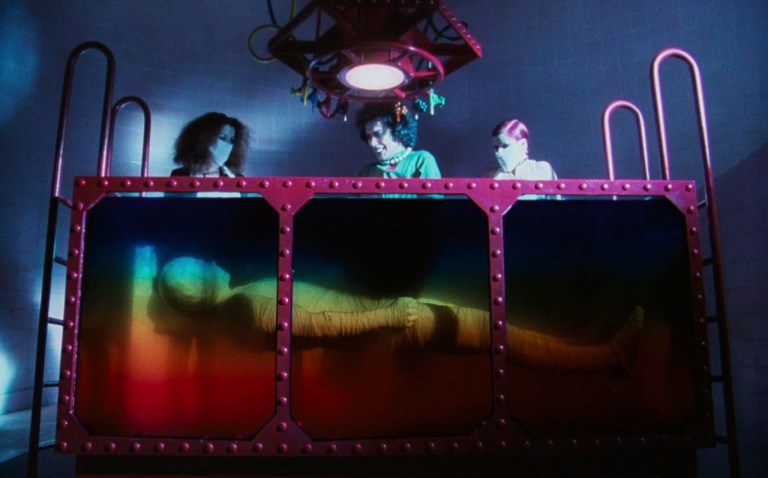
While The Rocky Horror Picture Show touches on many different aspects of science fiction and horror entertainment, central to the story is an adaptation of Mary Shelley’s Frankenstein. Frank-N-Furter (Tim Curry) is the flamboyant mad scientist, and Rocky (Peter Hinwood) is the creature. While there are obviously a lot of changes to this version of the doctor and the monster, the deteriorating relationship between Frank-N-Furter and Rocky is actually a really great adaptation of the original Frankenstein story.
New Frankenstein Movies
Mary Shelley’s Frankenstein (1994)
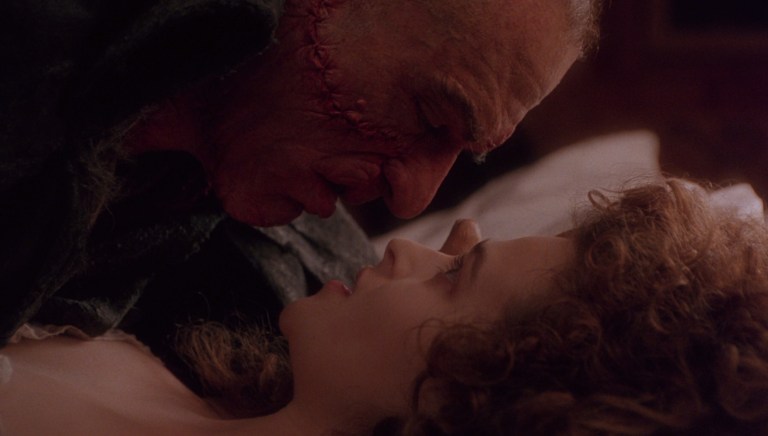
Kenneth Branagh stars as Dr. Victor Frankenstein in this high-tech, special-effects-loaded retelling of the classic Shelley novel. Robert De Niro turns in a tour-de-force performance as the monster, who escapes the clutches of his creator and wanders into the woods, hauntingly articulating his loneliness: “For the sympathy of one living being I would make peace with all.” Comparing it unfavorably to the earlier and more classic cinematic retellings of the story, Roger Ebert gave the film a mostly negative review with the exception of De Niro’s portrayal: “The monster has always been the true subject of the Frankenstein story, and Kenneth Branagh’s new retelling understands that.”
Frankenstein’s Army (2013)
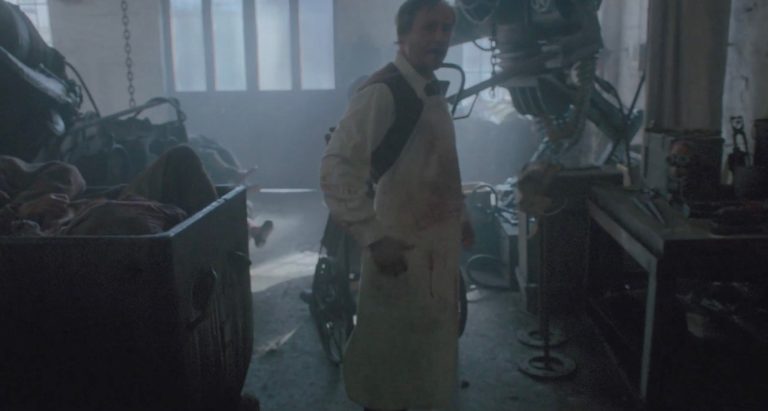
This is a found-footage film set in the final days of World War II as Russian troops advance into Germany. A Red Army documentarian, Dmitri, follows a battalion of troops as they stumble upon an abandoned church that houses a demented lab run by the grandson of Dr. Viktor Frankenstein. The psychotic but brilliant surgeon is creating killing machines using the dead body parts of slain Nazi soldiers and also implanting them with weapons in the hopes of forging an unstoppable squadron of killing machines who will restore hope and eventual victory to Hitler’s Third Reich.
Victor Frankenstein (2015)
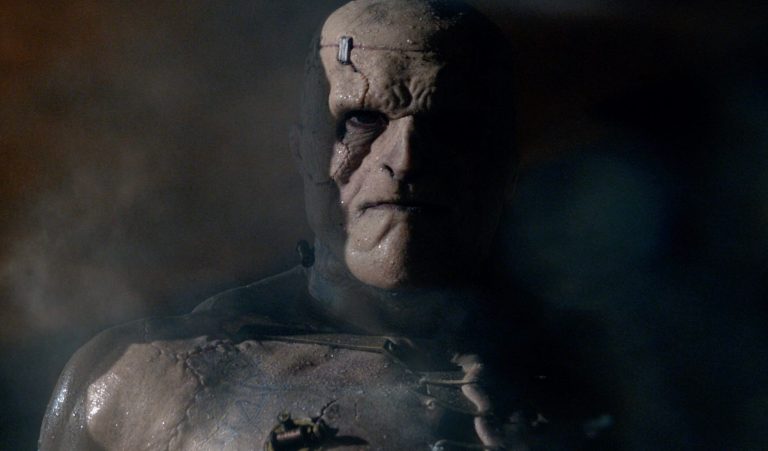
The twist in this film is that it’s told from the perspective of Dr. Frankenstein’s assistant Igor, who is portrayed by Daniel Radcliffe of Harry Potter fame. We learn Igor’s origin story, why he’s so troubled, and how he becomes redeemed through his friendship with the young medical student Viktor Von Frankenstein—who, as The New York Times tells it, “is played with a lot of physical dash and a crazed smile by James McAvoy, who all but hurls himself into the fray.
The Angry Black Girl and Her Monster (2023)

The Angry Black Girl and Her Monster is a reimagining of Mary Shelley’s Frankenstein novel in a modern setting, with a brilliant young woman named Vicaria taking the role originally filled by Victor Frankenstein. Vicaria believes death is a disease that she can cure. When her brother Chris (Edem Atsu-Swanzy) is killed after being drawn into a life of gangs and drugs, Vicaria uses her exceptional mind to sew his body back together and bring him back to life. With its combination of social commentary, great performances, and monster-movie scares, The Angry Black Girl and Her Monster is a memorable new spin on the classic Frankenstein story.
More Frankenstein Movies

- Life Without Soul (1915) is the second motion picture about Frankenstein. Unfortunately, no footage exists of the film.
- The Ghost of Frankenstein (1942) follows Son of Frankenstein, and features the monster (Lon Chaney Jr.) and Ygor (Bela Lugosi) as they seek Henry Frankenstein’s other son, Ludwig Frankenstein.
- Frankenstein Meets the Wolf Man (1943) is notable for being the first of the Universal monster movies to feature multiple monsters.
- House of Frankenstein (1944) expands the “monster rally” crossovers by having a movie featuring Frankenstein’s monster, the Wolf Man, and Dracula (though Dracula doesn’t last very long in the movie).
- House of Dracula (1945) is another film with Dracula, the Wolf Man, and Frankenstein’s monster, tough this time Dracula takes top billing.
- Abbott and Costello Meet Frankenstein (1948) is a black-and-white comedy where the characters meet Universal’s horror monsters.
- I Was A Teenage Frankenstein (1957) a descendant of the original Victor Frankenstein takes the corpses from a car crash near his house and assembles a teenage monster with a bad attitude.
- Jesse James Meets Frankenstein’s Daughter (1966) running from the law, legendary gunman Jesse James takes refuge in Frankenstein’s castle, where Frankenstein’s daughter transforms Jesse’s partner into a zombie named Igor.
- Frankenstein Conquers the World (1965) is a Japanese monster movie that takes place during World War II. Frankenstein battles a Godzilla-like figure.
- Frankenstein Must Be Destroyed (1969) is about Baron Victor Frankenstein (Peter Cushing) who blackmails a couple into helping him with his experiments.
- Dracula vs. Frankenstein (1971) isn’t a very good movie, but it is notable for being one of the final movie roles for the great Lon Chaney Jr.
- The Bride (1985) stars Sting as Charles Frankenstein and Jennifer Beals as Eva, a beautiful female mate created for Frankenstein’s monster (Clancy Brown).
- Monster Squad (1987) is a monster movie made for kids that features a collection of creatures inspired by the classic Universal Monsters, including Frankenstein’s monster.
- Frankenstein Unbound (1990) a weapons inventor is sent back in time 19th-century Geneva and has to confront Frankenstein.
- Frankenhooker (1990) is a black comedy featuring a porn star.
- Vampire Girl vs. Frankenstein Girl (2009) – This Japanese splatter film pits a young female vampire against a young female Frankenstein’s monster against each other over their competition for the affections of a boy.
- The Frankenstein Syndrome (2010) modern stem-cell research provides a new twist on reanimating the dead—with disastrous effects.
- Frankenweenie (2012) this Disney movie combines Frankenstein and dogs.
- Frankenstein’s Monster: A Steampunk Adaptation (2014) is a low-budget film that reimagines Frankenstein with a steampunk aesthetic.
- I, Frankenstein (2014) is an action adventure story about a war of ancient clans.
- Igor (2008) is a Tim Burton animated film about a hunchback with many references and nods to Frankenstein.
- Mary Shelley (2018) directed by Haifaa Al-Mansour captures the real events that led to the writing of Frankenstein when she was 18. Fun fact: When Mary Shelley wrote this book, she was very famous (perhaps infamous) for her affair with poet Percy Bysshe Shelley and on a trip to Geneva with a bunch of other famous young people.
